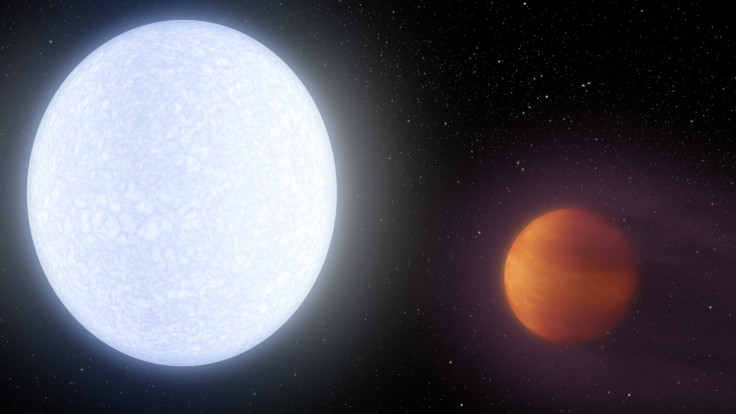KELT 9b: Hottest planet in the universe ever discovered is hotter than some stars
KELT-9b is about 4,300 C and as hot as a red dwarf star.

A giant planet about 2.8 times the mass of Jupiter, called KELT-9b, has been detected around an incredibly hot star. It is both the hottest planet ever discovered and the only planet found to orbit a star that hot.
In KELT-9b's daytime, its temperature reaches 4,327 C (7,820 F) – just 1,200 C cooler than our Sun. It is about 2.8 times the mass of Jupiter but overall it appears much larger as it has only half its density.
"It's a planet by any of the typical definitions based on mass, but its atmosphere is almost certainly unlike any other planet we've ever seen just because of the temperature of its day side," said study author Scott Gaudi of Ohio State University in a statement.
The star that the planet orbits is called KELT-9. It is found about 650 light years away from Earth in the Cygnus constellation. The star is almost 9,900 C, straddling the temperature boundary between two types of hot star. A-type stars are between about 7,000 and 9,700C and B-type stars are even hotter, with KELT-9 roughly in between.
It's extremely rare to find planets orbiting either A-type or B-type stars. Only 6 have been found around A-types and none have been found around B-types before.
The intense radiation from KELT-9 on its orbiting star is thought to be blasting away the planet's atmosphere, leaving a trail of gas behind the planet.
"KELT-9 radiates so much ultraviolet radiation that it may completely evaporate the planet," said Keivan Stassun of Vanderbilt University, also a study author.
"Or, if gas giant planets like KELT-9b possess solid rocky cores as some theories suggest, the planet may be boiled down to a barren rock, like Mercury."
As well as the sheer amount of radiation that its star emits, the planet KELT-9b also orbits extremely close to its star, intensifying the dose it receives.
There is no chance of finding life on KELT-9b, researchers say, as the maximum known temperature that life can exist on Earth is 122 C. But studying outlier planets like KELT-9b can help us understand how planetary systems form even in the most extreme circumstances.
"As we seek to develop a complete picture of the variety of other worlds out there, it's important to know not only how planets form and evolve, but also when and under what conditions they are destroyed," Stassun concluded.
The discovery is detailed in a paper published in the journal Nature.
© Copyright IBTimes 2025. All rights reserved.






















